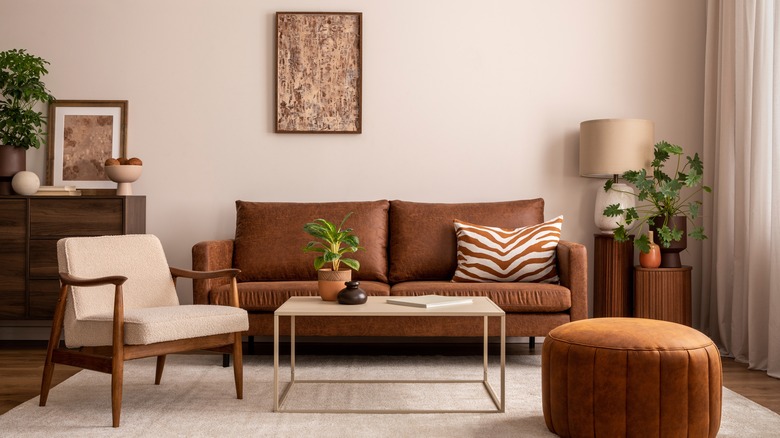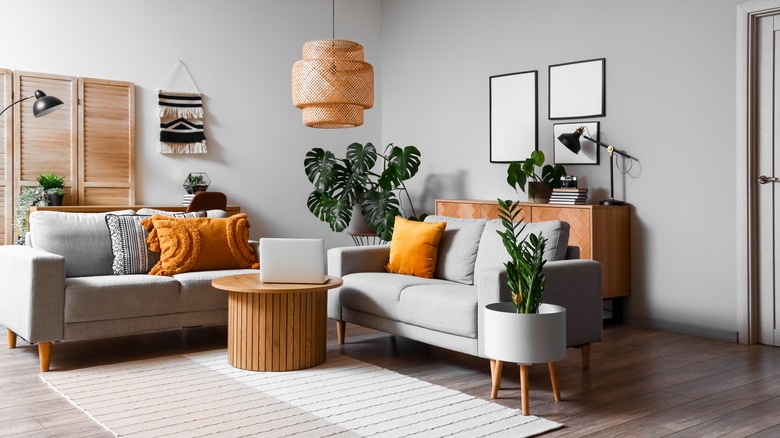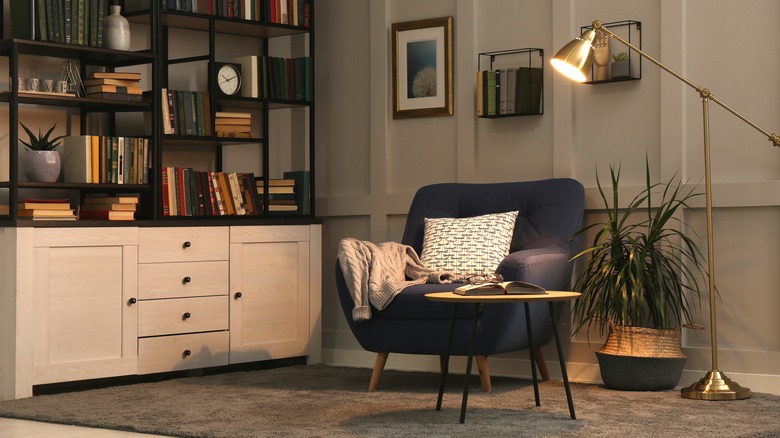How To Choose The Perfect Design Style For Your Space
Once the chaos of remodeling or moving into a new place subsides, you're left with a big decision — interior design. Designing your blank slate is exciting, but it can also feel overwhelming or slightly intimidating. After all, your scheme will reach every corner of your space, and you will be living amongst your decisions for awhile if all goes well. Choosing a design style doesn't have to be stressful, though, and House Digest has tips on how to elevate and decorate your dwelling perfectly. Ultimately, the most important factor when plotting your interior is to reflect your personality and character.
Your home is your sanctuary and one of your crowning achievements. It should be filled with items that reflect your personality and your personal stories. These can be anything from a prized piece of artwork to a captivating article of furniture. The most important part is that whatever you choose is meaningful to your life and story, and brings your personality to the interior. There should always be a piece of you incorporated into your home design.
Functionality and aesthetic should go hand in hand
While building a personal narrative within your home can help make your design process easier, it's also important to consider functionality when incorporating pieces. Finding balance between personality and function is a must. If you are working with less square footage, or even if your home is large but you prefer a minimalist approach, avoiding items that take up space and don't offer any benefits is a great way to steer clear of clutter in your home.
An oversized sculpture or a large piece of furniture could reflect your personal décor style, but if it gets in the way of day to day activities, limits how many people can be in one area, or keeps you from adding other beloved items, it might not be the best fit for your interior design scheme. A good example would be a love of books. Built-in bookshelves will allow you to display your treasured collection without taking up too much floor space.
Overcrowding is style's worst enemy
Of course, there are exceptions to these suggestions regarding functionality and aesthetic, especially if you have a lot of empty space that can accommodate random pieces that would otherwise create clutter. However, for most homes, you should always avoid overcrowding your rooms. Not only will this detract from your style designs, but your personality could get lost among the jumble, creating chaos rather than a well-structured layout.
You can still mix pieces that are meaningful, but leave room to grow and live, remembering that empty areas are good too, and could even help enhance the existing items you've selected to represent your style.


